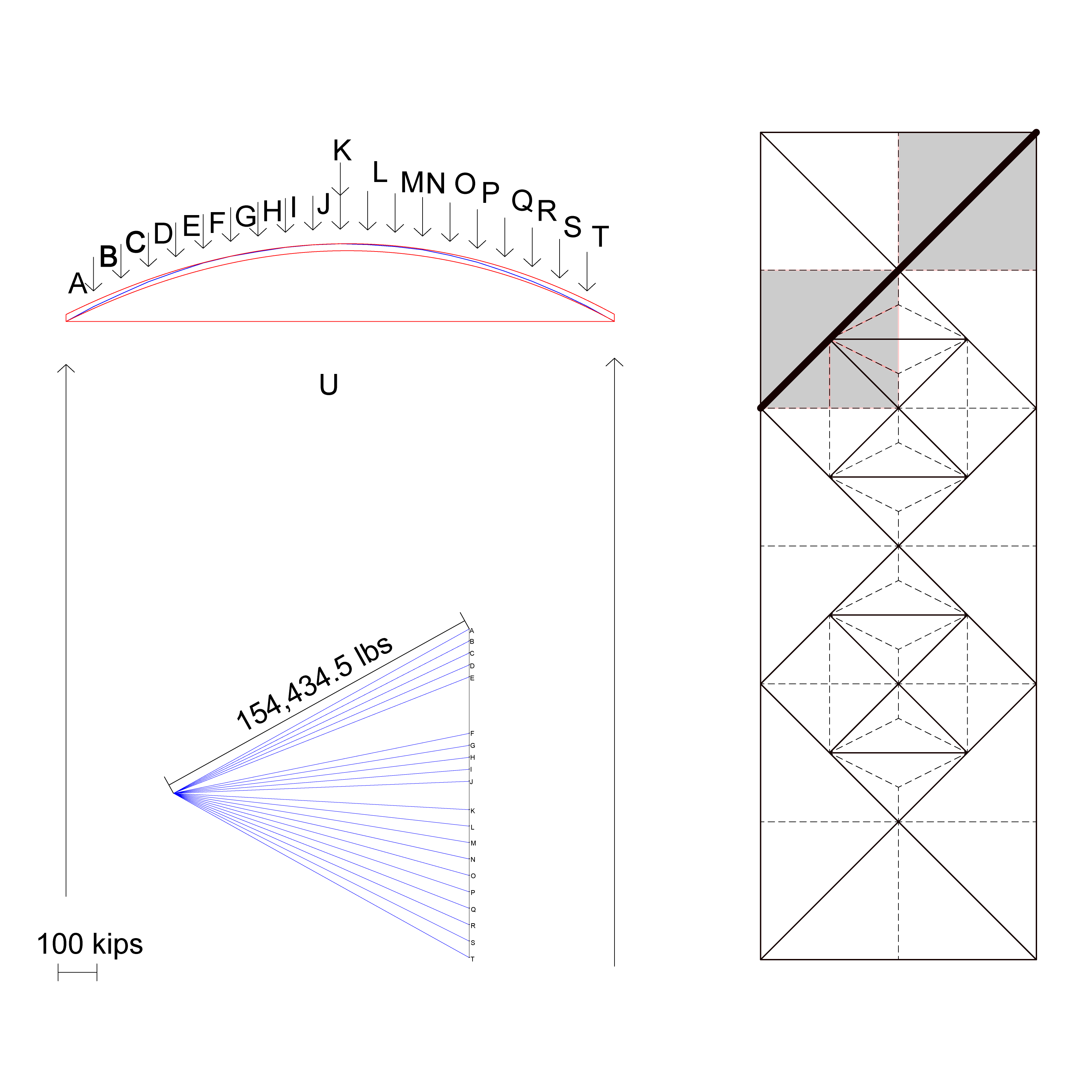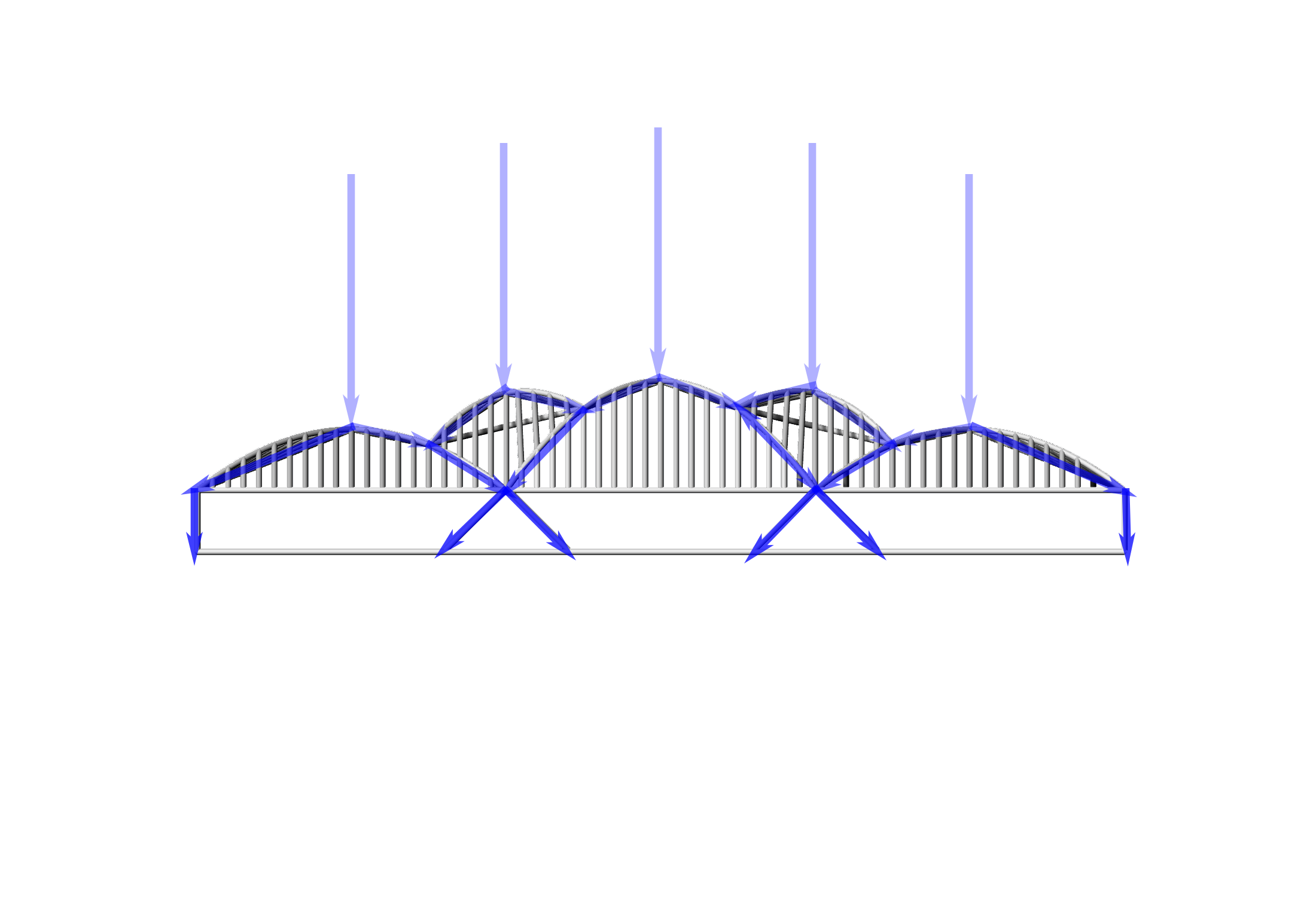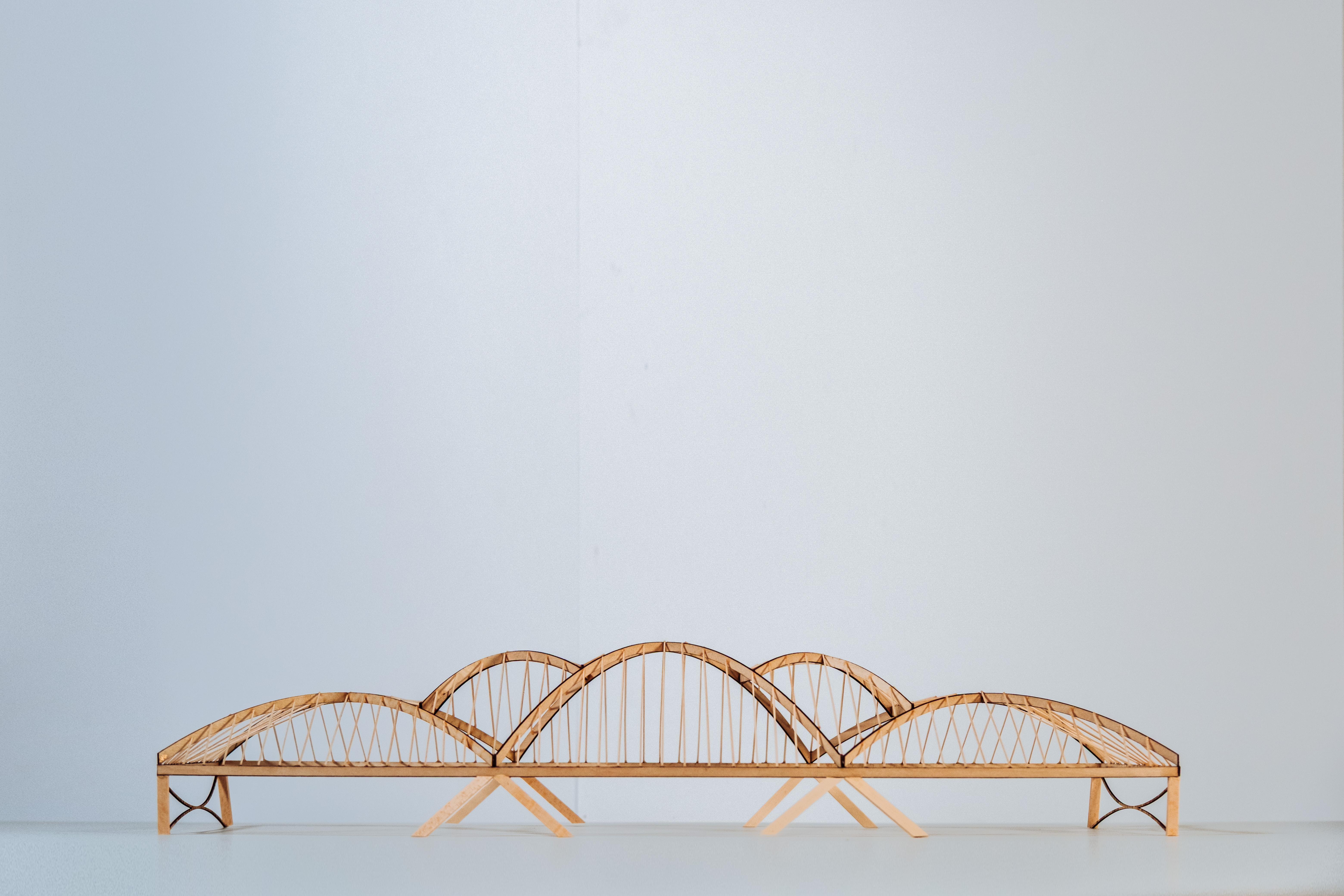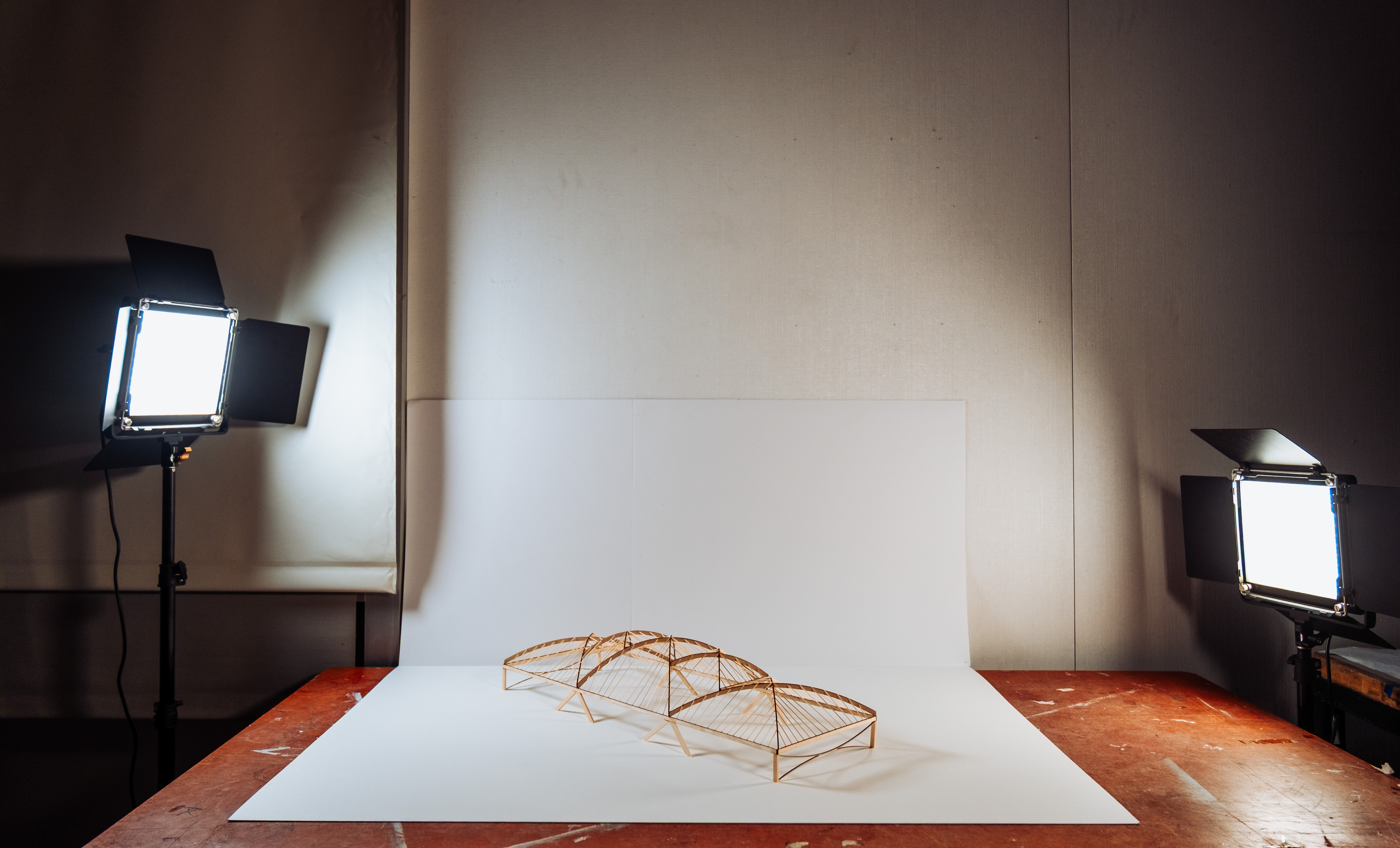
Taught by Ramon Weber
20241205
These works are an exploration of how <p-color-blue>structural constraints can guide design, rather than limit it<p-color-blue>. Forms were derived through the use of <p-color-blue>graphic statics<p-color-blue>, and <p-color-blue>emerged<p-color-blue> through this process, <p-color-blue>rather than modifying<p-color-blue> visual design for structural functionality.
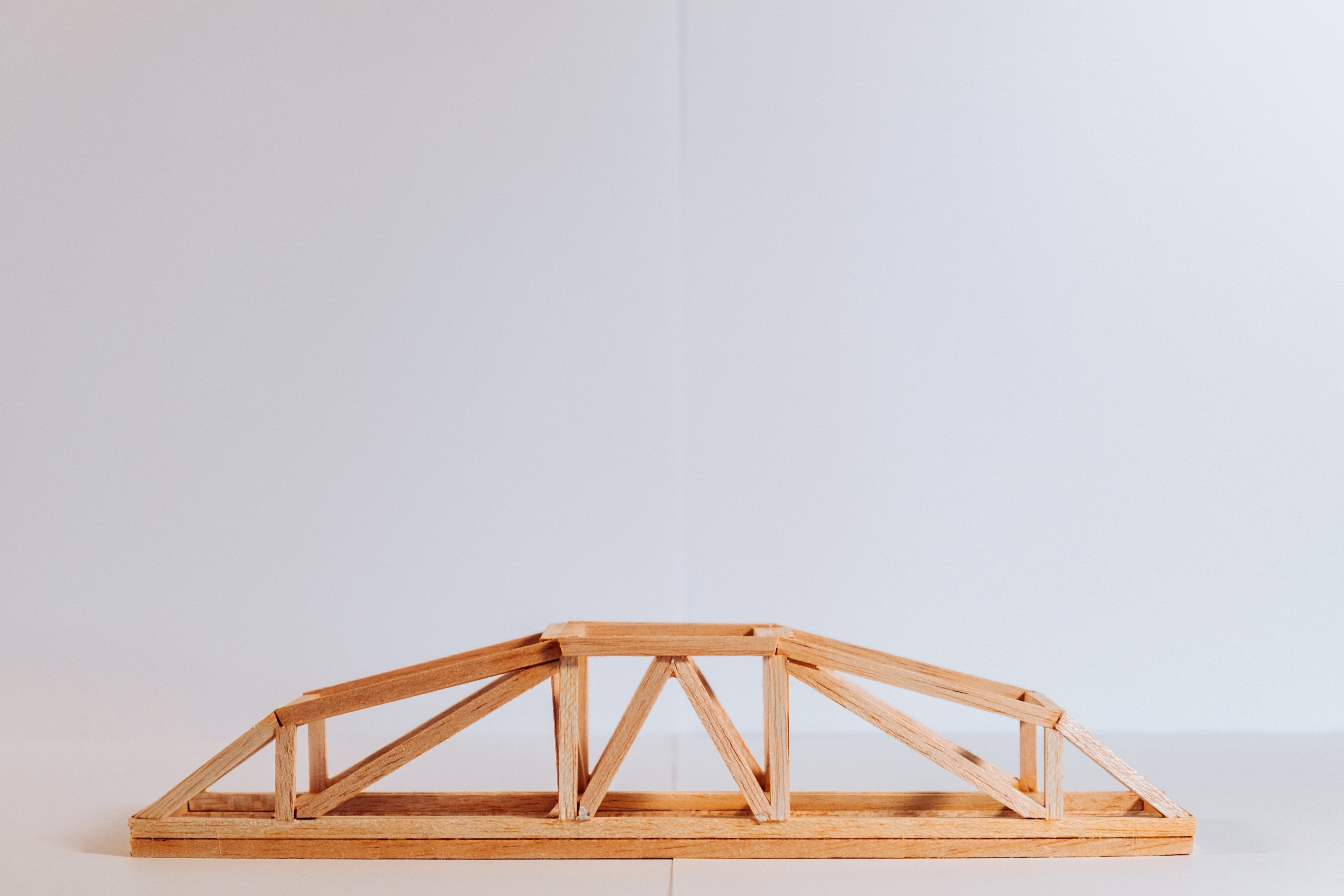
ARCH150 - Structures
Taught by Ramon Weber
20241003
Conceptualized as a <p-color-blue>Howe truss<p-color-blue>, the form of this bridge mimics the <p-color-blue>catenary arch<p-color-blue> across its span. The truss is adapted to more intelligently fit beneath the catenary arch given beam cross section constraints, and the result is an <p-color-blue>composition of form and structure<p-color-blue>. The bridge was the <p-color-blue>highest performing<p-color-blue> in terms the ratio between <p-color-blue>load borne<p-color-blue> and <p-color-blue>bridge weight<p-color-blue> in a group of approximately 100, and was <p-color-blue>designed in collaboration with Marina Mezhibovsky<p-color-blue>.


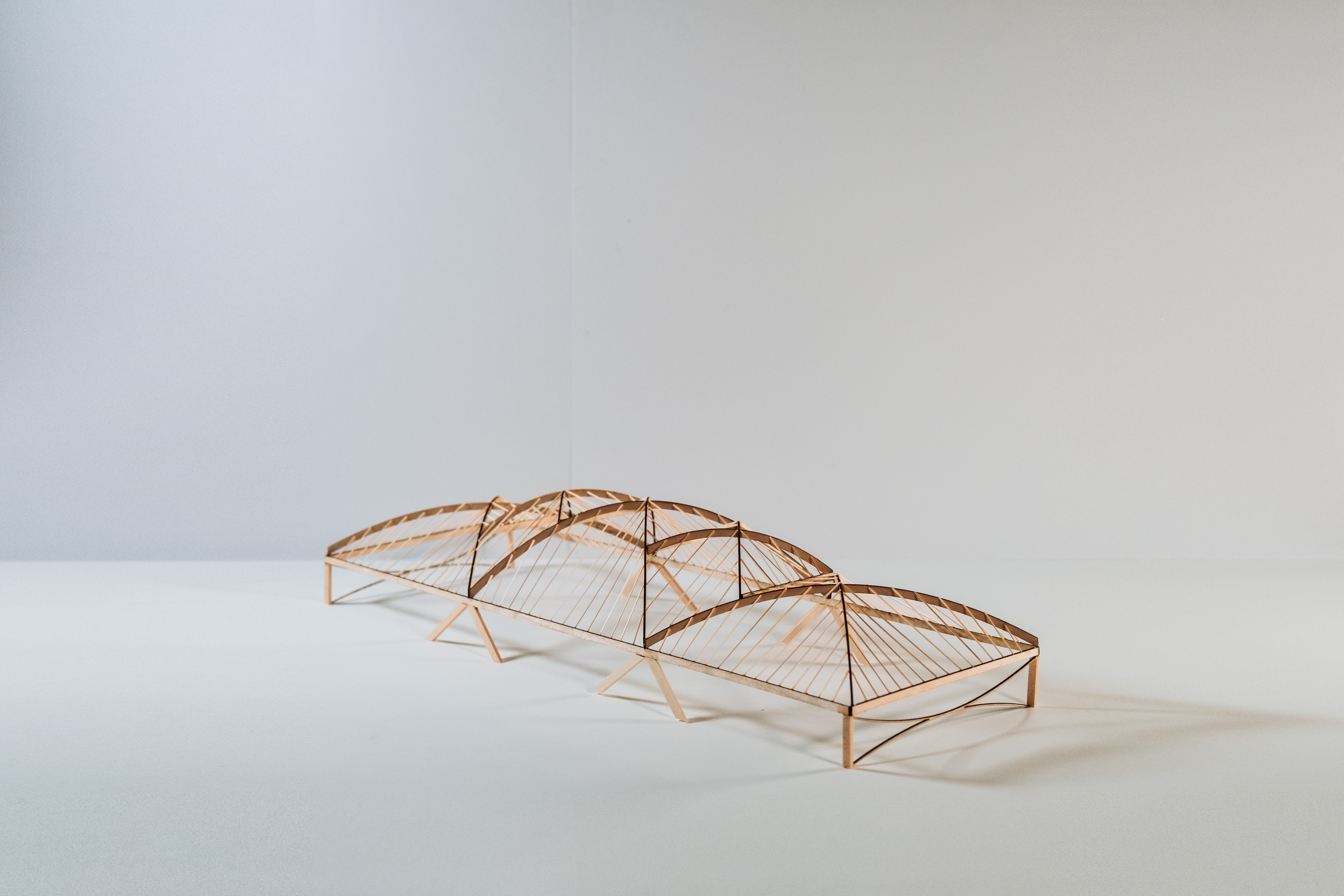
ARCH150 - Structures
Taught by Ramon Weber
20241204
Designed <p-color-blue>in collaboration with Marina Mezhibovsky and Eryn King<p-color-blue>, this roof structure was designed as an elegant solution to the structure of a timber factory spanning <p-color-blue>100'x300'<p-color-blue>. Three <p-color-blue>primary overlapping catenary arches<p-color-blue> span the roof, with <p-color-blue>secondary arches connecting<p-color-blue> the space between the arches. <p-color-blue>Tertiary supports reinforce<p-color-blue> these arches, as well as creating additional support for the building envelope, as well as any apertures.
